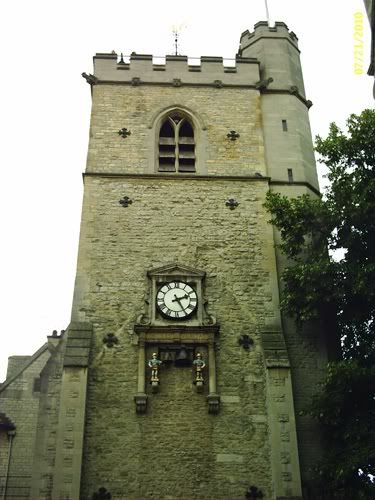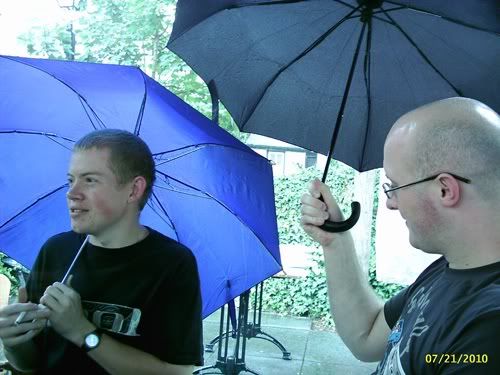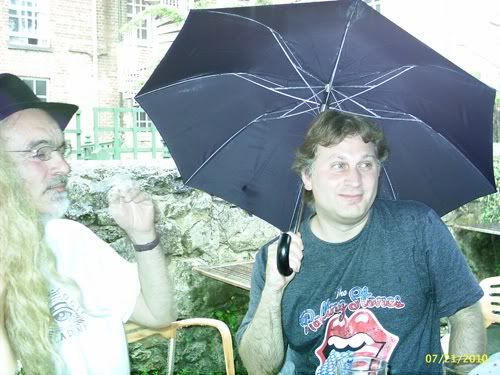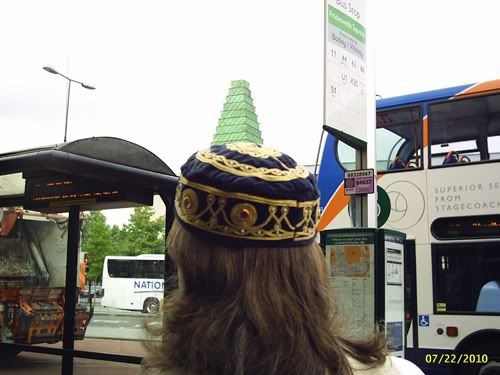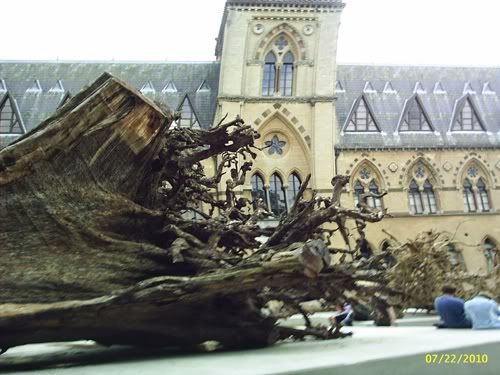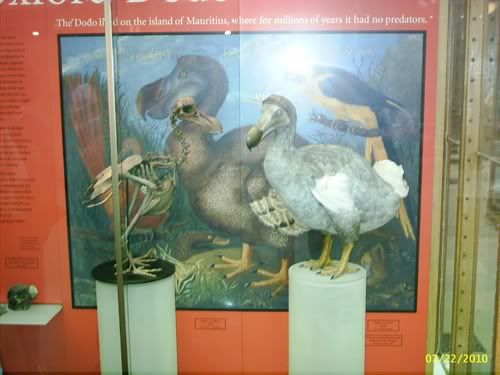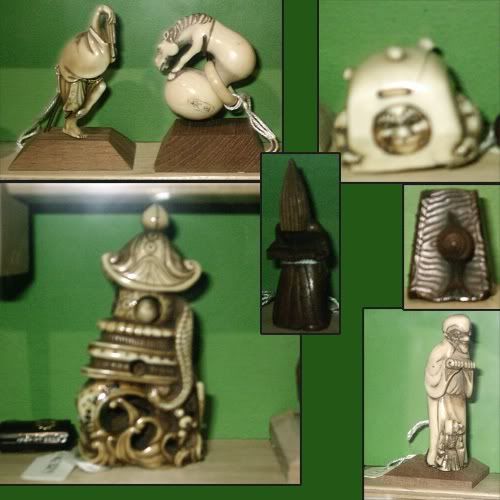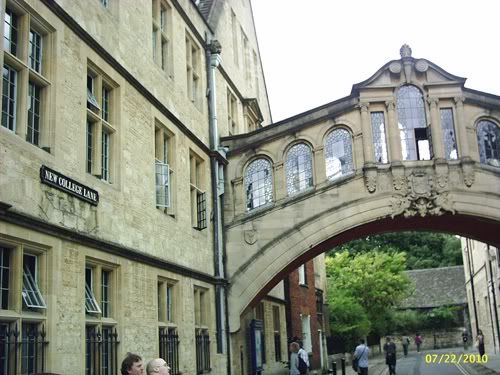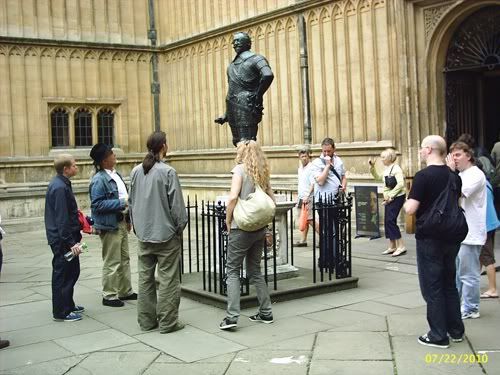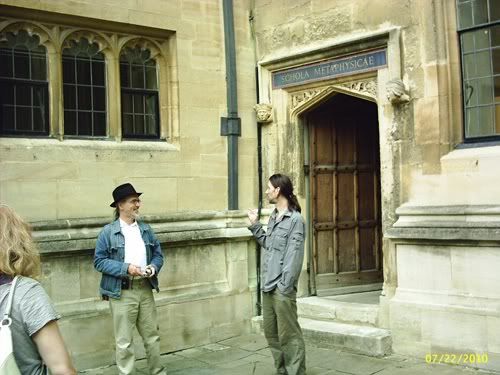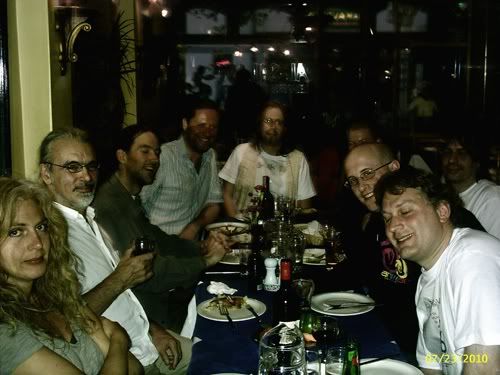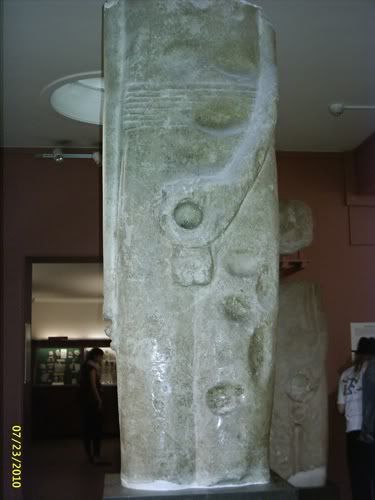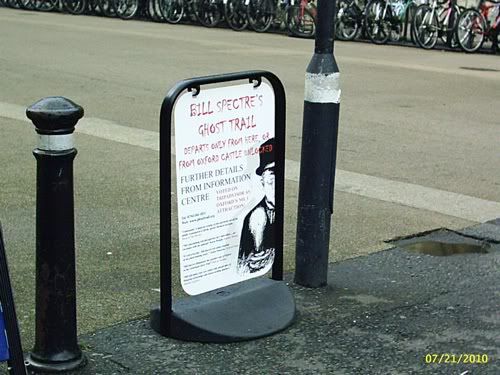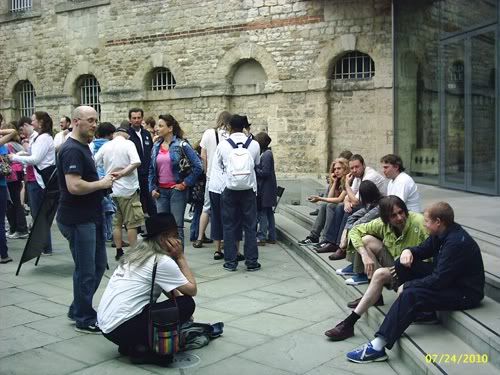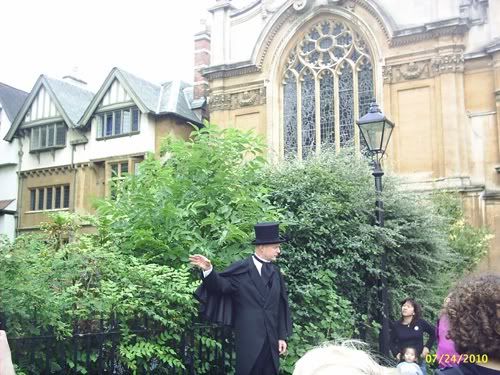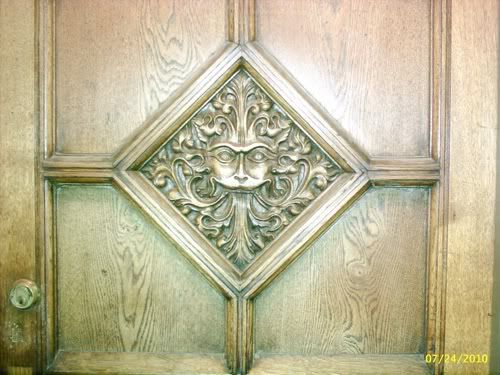The Société Périllos, editors of some hermetic books, published one page on their website proposing an interesting story, where 19th century symbolism is mixed up with fin-de-siècle occultism, and absurdity is elevated to a level Alfred Jarry would have appreciated.
First, a little history.

Alfred Jarry became famous by writing the father Ubu trilogy, considered the first absurdist theatre plays. He also wrote "Gestes et Opinions du Docteur Faustroll, pataphysicien" (Exploits and Opinions of Dr. Faustroll, pataphysician) in 1898, published posthumously in 1911.
In this book, he inserted his main ideas on the Science of imaginary solutions in a strange symbolist tale where Doctor Faustroll navigates through land, accompanied by 27 'Livres Pairs' (equivalent books), his ape-servant Bosse-de-Nage, who could only express himself with the words "Ha ha" (probably meant as a pun to insult Jarry's Belgian friend Christian Beck who used this as a meaningless expletive) and a bailiff named Panmuphle. They travel from island to island, each one populated by a writer contemporary of Jarry and his microcosmos. In the end Faustroll goes on a little killing spree after having seen a horse's head, the surface of god is calculated and Faustroll himself appears to be the book in which his adventures are told. All of it extremely bizarre to most people, and written in an impeccable erudite French influenced by François Rabelais, French philosophy and scientific odd facts.
Jarry was much admired by dadaists and surrealists (Marcel Duchamp, Max Ernst and Juan Miro amongst others) and his ideas started to proliferate amongst the happy few, creating an environment where they were bound to give birth to some sort of club. In 1948 the Collège de 'Pataphysique was founded by one man (if I told you his name I'd have to kill you). From the start and totally in the spirit of Jarry, he clouded the creation of the college in mystification. Officially the founder is a Doctor Sandomir, who became the first Vice-Curator (the ethernal Curator being Doctor Faustroll, assisted by his Starost Bosse-de-Nage), about whom only one portret is known. He was assisted by Mélanie Le Plumet (a cat), Oktav Votka and Jean-Hugues Sainmont, all avatars of the same person (I didn't tell you this).
From the beginning writers and artists who were part of the French intelligentsia joined in, and what was at first meant as a one-man mystification shifted from imaginary towards reality. The movement slowly invaded other countries, giving birth to offsprings of the College, some of them detailed on my blog.
Since 1948, the College published regularly a magazine (only available to members) under the leadership of three other Vice-Curators elected by an unique elector (who was chosen by all members - a system not unlike the complex elections of the Doge of Venice): Baron Mollet (who used to be Guillaume Apollinaire's secretary), Opach (who was very real but about whom very little is known) and the present leader, Lutembi (a large crocodile in Uganda who might have died in 2007), while the secret founder kept hiding under different personalities (Sainmont ending up in a lunatic asylum after being thrown out of the College). Opach decided to occultate of the College from 1975 to 2000, effectively making a secret of all nominations in the complex ranking system. Meanwhile the publications went on, even more surrounded by a halo of secrecy, and more and more groups worldwide joined the movement.
All of this created a rather elitaristic atmosphere, and to people attracted to conspiracy theories the College might look like a very secret society indeed.
In Wallony, Belgium, Richard Tialans (1943-1995), an erudite librarian, painter, photographer and theater-maker, member of the College, created in 1969 the "Centre d'Orientation et d'Information Théâtrale" (COIT), a theatrical society, and started for his own pleasure to publish an irregular journal called the "AA Revue", a name obviously borrowed from Bosse-de-Nage. He claimed in 1991 to be read by 10 people and to have only one paid subscription. I still have a friendly letter from him refusing (damned) to add me to his list. A second paid subscription (from the New York Library) was simply refused! Many members of the College wrote quite bizarre bits for the Revue, which helped to make it a much sought after mythical underground publication. I still haven't managed to find one!
Now for the conspiracy interpretation.
It seems Belgian nobleman Philippe de Chérisey was linked to the Priory of Sion by French conspiracist Jean-Luc Chaumeil. The writer of the Société Périllos, André Douzet, claims to have been approached by people with a new document concerning rather personal writings by de Cherisey.
And this was none other than AA Revue # 123, which next to a French translation of Immermann's Baron Munchhausen, published three texts for in total 25 pages by the same Philippe de Cherisey: "Catalog of common circumflexes", "Circumflexes of names" and "Circumflex and Umlaut".

Because of the secrecy of the publication, Douzet even issued doubts whether there had been other issues. The date, from the pataphysical calender, "Absolu 107", was seen as another hermetic sign. (1)
Douzet adds 123 to 107 and wonders what 230 means. The word 'vulgar' next to actual date is interpreted correctly as "meaning that they are using the ordinary calendar system as compared to a more sacred calendar, like that of some organisation or society", and through the use of another calendar "the reader may think that this publication is created by 'initiates'”, but the author goes on to refer to the Masonic calendar. Then there's the title of the publication. Douzet wonders whether this is the secret review of the enigmatic AA. And the editor goes by the strange name of 'Richard Tialans', for Douzet obviously a pseudonym! And as out of three texts, three are by de Cherisey, Douzet extrapolates this is all a mystification… but one to cover the real editor, de Cherissey and his secret agenda. de Cherissey might have published this review as part of a disinformation scheme, in the same vein as Dan Brown's books.
Douzet then elaborates on his doubts on the amount of publications as no one within the 'esoteric France' community ever heard of it. "This document appears to be almost totally unknown and unstudied". (2)

(1)The Collège issued several versions of the calendar, all based on the first one proposed by Jarry in his two almanachs of 1897 and 1901. Erroneously Douzet mixes up the first calendar by Jarry, which used the Christian year, and the later editions developped by the College, where the 'Pataphysical Era start on September, 8, 1873, the birthdate of Jarry. What remains is that the Pataphysical calendar used thirteen months, twelve lasting 28 and one lasting 29 days. They are: Absolu, Haha, As, Sable, Décervelage, Gueules, Pédale, Clinamen, Palotin, Merdre, Gidouille (29 days), Tatane, Phalle. Later on the College changed the names of the saints and holidays.
(2) And for obvious reasons… I recieved a list from Tialans with the aformentioned letter and can assure he did publish more than 200 issues from 1969 to 1991. Most used the Christian date, but N° 78 to 126 used the 'pataphysical calendar.

Four covers found online, #109-110, 123, 166 and 202-203.
Then the inquiry takes a leap forward: Douzet discovers the 'Pataphysical calendar was developped by Alfred Jarry. The apostrophe in front of the P is another mystery to him. But the concept of 'Pataphysics in relation to metaphysics as metaphysics is in relation to physics, confirms the belief that it deals with a realm beyond soul and spirit. And the author utters the very pataphysical (inconscious, hence without apostrophe) "Ubu is in their interpretation both God and the Devil. And it is hence obvious that this discipline is at the same time both utterly serious, and totally laughable – absolutely absurd and philosophically essential."
And then he totally looses his marbles. "And what are we to make of the fact that Alfred Jarry provides his “father Ubu” with a mistress, and gives her the name Madeleine – Magdalene? Does it not sound similar to that old Cathar ideology, in which they too believed that there was an “other god”, to use the words of Yuri Stoyanov, whom was deemed to be female, and which in the region of the Languedoc, by the local Cathars, was apparently identified with Magdalene (…)". And he goes on, comparing the riddles in the Rennes-le-Chateau mystery with the grotesque plays featuring père Ubu.
Now the order of AA, not to be confused with uncle Al's A:.A (or is it?) was supposedly a hermetic order in 17th and 18th century France and consisted exclusively of priests.
One of the two main sources about the AA is a book published in 1775, 'L'AA Cléricale', published by 'Mysteriopolis'.
The other source is count Henri Bégouen's, "L'AA de Toulouse aux XVIIe et XVIIIe siecles, d'après des documents inédits" (1913), a recent reprint of which I bought last month. Bégouen was a French archeologist, and this is his only work outside of his field.

The AA is linked to the "Compagnie du Saint-Sacrement" (Company of the blessed sacrament"), a French catholic secret society, self-proclaimed charitable society, and a militant association for the defence of the Church founded in 1630 and abolished by Louis XIV in 1660.
The AA might have existed prior to the dissolution of the Compagnie, but it took over some of its goals in an even more secretive way. The name AA is unclear. Maybe it comes from the alchemy, where AaA means 'amalgamate'. Others think it's shorthand for Associatio Amicorum. Or it might mean 'Amis', the plural of friend just as 'MM' in French means 'messieurs', plural of sir and 'CC' means the plural of consul. Bégouen discovered 29 cities in France where a secret AA society regularly convened. The mystery of the AA was such that it might appear as a hoax, and its central 'secret' goal remains unknown. It has been compared to an intelligence agency.
From RH-forum:
"There is mention of a password, how to envisage the self-destruction of the cell, to destroy all traces of its existence, to pass from action to silence if there is the slightest doubt. You can wonder whether terrorist organizations practice such a level of secrecy. This type of moral convention is of such an inconceivable rigor that the only framework in which this document could come about is that of a fanatical sect… or of a movement that was elected to safeguard a frightening secret."
“At the same time, behind this congregation or visible company, there was another occult one. It was the true AA, whose existence was a mystery and the name of the members an even greater mystery still. There were several political characters among them. The meetings were secret and certain members, in particular Prince de Polignac, only went to them in disguise. For on being allowed into this association, it was necessary to swear to absolute secrecy, to promise a blind obedience with passwords which no-one else knew.”
"The AA is the best candidate for the framework in which Saunière and his closest allies operated; membership of the AA could explain the extreme level of secrecy that Saunière adhered to – at the same time being instructed on how to maintain that secrecy so that his “double life” would never be known."
From Philip Coppens' website
"The reference is so enigmatic that you might suspect you had become a character in a detective novel! The “with permission” reference is just one in a long series of incredible details. Is it a hoax? A joke? Have these documents been falsified, as has been the case in some instances in the mystery of Rennes-le-Château? "
At the end of his article on the aforementioned Perillos website, Douzet thinks he found the link: as de Cherissey became involved with the story of abbé Saunière, who might have been part of the AA, it's only fitting that he should write in a publication called AArevue; and as such, for Douzet, both the mystery of Rennes-le-Chateau and the College of Pataphysics are both smokescreens, part of a larger secret: the AA society. Or how a mystification can become a conspiracy in the mind of the gullible.















